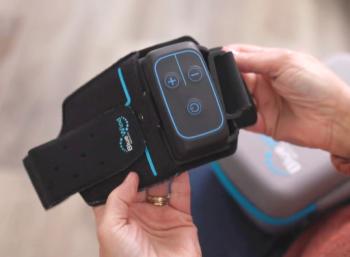
Staying connected to patients beyond the office visit
The growth of smartphone usage is giving physicians new ways to stay connected with patients and improve their care, and evidence shows that communication outside of the office setting is acceptable and can help improve outcomes.
The growth of smartphone usage is giving physicians new ways to stay connected with patients and improve their care, and evidence shows that communication outside of the office setting is acceptable and can help improve outcomes.
Further reading:
Consider the following:
· Nearly two-thirds of Americans owned smartphones in 2015, according to the Pew Research Center, and 62% of smartphone owners used their phone to look up information about a health condition.
· A
So why aren’t more physicians staying connected to their patients using this technology? Part of the problem is that doctors haven’t collected updated information as communication technology and patient preferences have shifted, says Chuck Hayes, vice president of product management at TeleVox Software, an automated voice and communications company focused on the healthcare field, that is owned by West.
Hot topic:
“I see a lot of interest in new technology using email and texting, but the physicians only have landline numbers or don’t know which is a patient’s landline and which is the cell number,” says Hayes. “You have to capture that information and the patient preferences for what channel they want to be communicated on.”
With the right information, targeted communications can be used to improve care. For example, Louisiana-based Ochsner Health Systems saw that its patient population was near the bottom of the national average for colorectal screening. Ochsner implemented a program of automated phone notifications to encourage a group of more than 3,000 patients who were due for a colonoscopy or upper endoscopy to schedule a screening.
To combat procrastination, patients could respond immediately by pressing a button, which connected them with someone ready to schedule an appointment or answer questions. Within a month, 578 patients had scheduled a test, catching pre-cancerous polyps in an estimated 145 individuals. Hayes says similar automated communications techniques can be used to remind patients of appointments or as a follow-up to see if patients have any questions about their care.
Further reading:
This can be especially useful for care of patients with diabetes and other chronic conditions, he says. For example, a care manager could create automated communications for foot and eye exams, A1c draws and collecting blood sugar readings. Automation frees up staff for more important duties, and making calls in the evening is more likely to reach people when they would answer the phone. “Most people are at work during the day when a staff person would be calling them,” Hayes says. “The result is you end up leaving the patients a lot of messages, and you’ve already missed your opportunity. The odds of someone actually calling you back are pretty slim.”
By calling people after office hours, physicians can use automation to build a stronger connection with patients by providing them with reminders and helping them schedule the care they need, says Hayes.
As medicine moves toward more risk management, doctors are going to get paid based on making the patient better, Hayes says, meaning a greater need for staying connected between visits to better track patient health.
Related:
Most patients are not able to manage a chronic health condition entirely on their own, according to the West study. They need support, in the form of a team of professionals to coach and encourage them. This is an area where technology, together with guidance from trained professionals, can benefit patients on a daily basis, continuously over a long period of time.
“Closing the gaps in healthcare does not require large scale interoperability between technology platforms, but by being able to communicate with the patient,” says Hayes. “You can achieve fantastic results and do that today.”
Newsletter
Stay informed and empowered with Medical Economics enewsletter, delivering expert insights, financial strategies, practice management tips and technology trends — tailored for today’s physicians.














